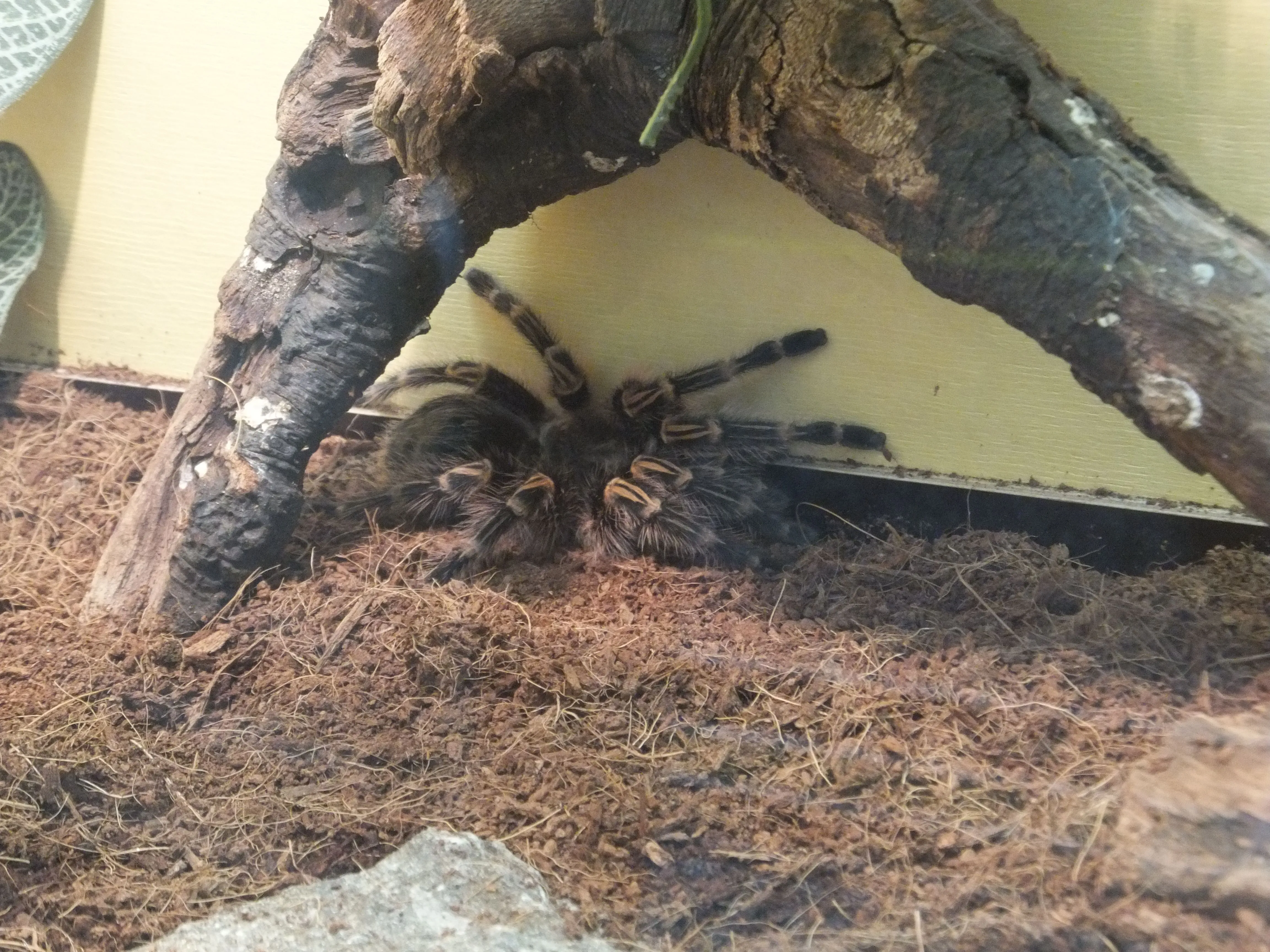What Makes a Tarantula a Good Pet
Tarantulas are fascinating creatures, and many people find them to be excellent pets. When considering a tarantula as a pet, it’s essential to understand what makes a particular species a good fit for you. Several key factors come into play, including temperament, ease of care, and overall suitability for your lifestyle. By evaluating these aspects, you can make an informed decision and provide the best possible environment for your new companion. This guide will explore the various characteristics that contribute to a tarantula’s appeal as a pet, helping you choose the perfect arachnid for your home. Responsible pet ownership begins with knowledge and understanding.
Temperament Considerations
One of the most crucial aspects of a tarantula’s suitability as a pet is its temperament. Tarantulas exhibit a wide range of personalities, from docile and easygoing to skittish and defensive. For beginners, it’s generally advisable to choose a species known for its calmer nature. Docile tarantulas are less likely to bite or flick urticating hairs, which are small, irritating hairs used as a defense mechanism. Before acquiring a tarantula, research the typical behavior of the species, including its level of aggression and its response to handling. Remember, even the most docile tarantula can become defensive if provoked or feels threatened, so handle with caution. Temperament is a key factor.
Handling and Interaction
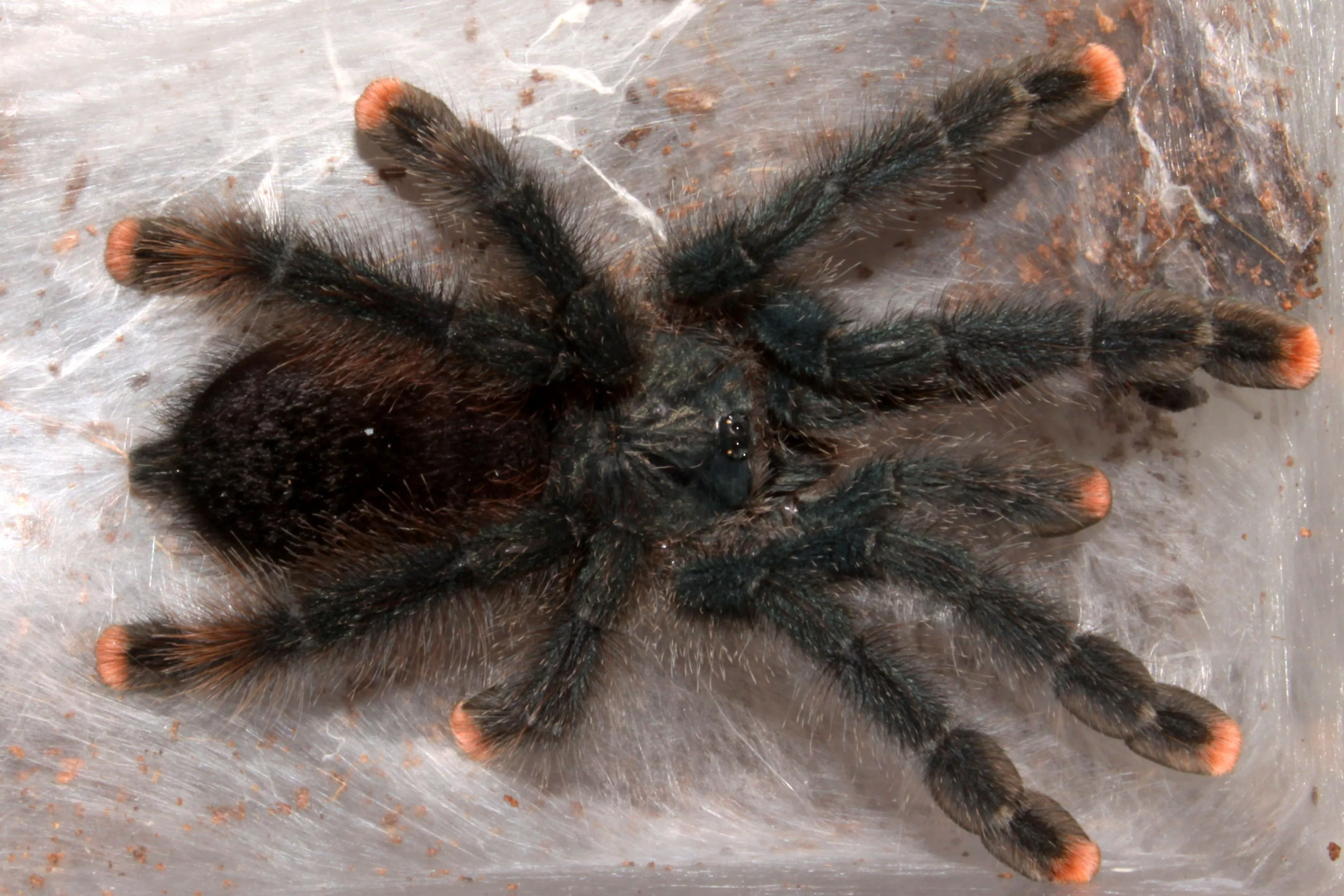
While tarantulas are generally not pets that you handle frequently, it’s still important to consider how you’ll interact with your new pet. Handling can be stressful for tarantulas and may increase the risk of bites. However, if you do need to handle your tarantula, it should be done gently and with great care. Always approach the tarantula calmly, and avoid sudden movements that could startle it. Handle them over a soft surface, like a bed or carpet, in case they fall. Remember that the best way to interact with your tarantula is through observation. Watching their behavior, feeding them, and maintaining their habitat offers a rewarding experience for both you and your pet. Handling should always be done with caution.
Venom Potency
All tarantulas are venomous, but the potency of their venom varies significantly between species. The venom of most tarantulas is not considered dangerous to humans, typically causing effects similar to a bee sting. However, some species have more potent venom, and allergic reactions are possible. It’s important to research the venom potency of any tarantula species you are considering. While bites are rare, knowing the potential effects can help you prepare and respond appropriately if a bite does occur. The primary defense mechanism for most tarantulas is not biting; rather, it’s the flicking of urticating hairs. These hairs can cause skin and eye irritation, so handling them with care is crucial.
Ease of Care
The ease of care is a critical factor for any potential tarantula owner. Some species have specific environmental needs, such as precise temperature, humidity, and substrate requirements. Others are more adaptable and easier to maintain. Beginners should ideally select tarantulas with less demanding needs. This reduces the chances of health issues arising from improper care. Research the specific requirements of the tarantula you are considering. Consider factors like feeding frequency, enclosure cleaning, and substrate type. Simplifying these aspects makes the pet-keeping experience much more enjoyable, especially for beginners. Ease of care makes all the difference.
Feeding Requirements
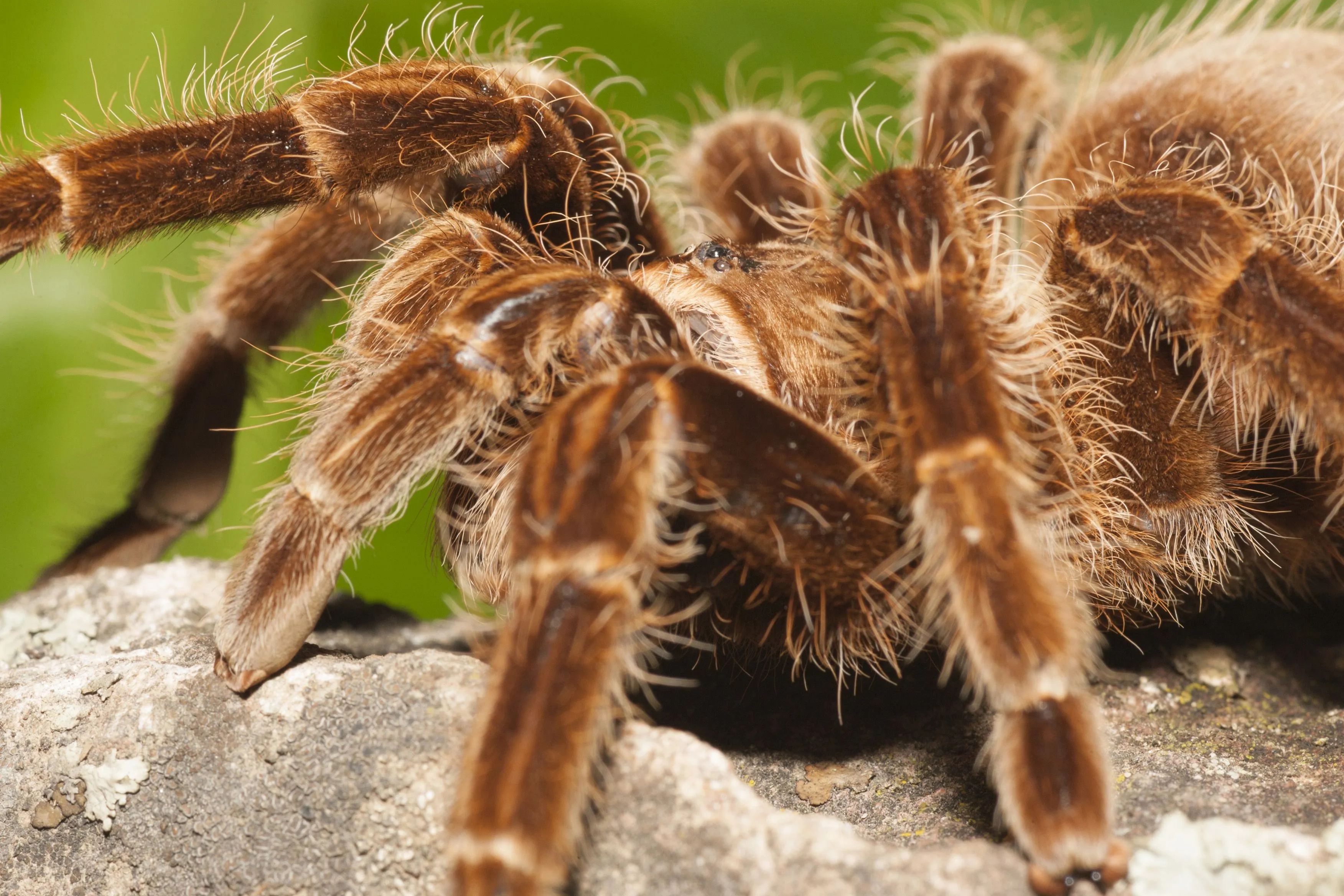
Tarantulas are carnivores, so they primarily eat insects. The type and frequency of feeding depend on the tarantula’s size, age, and species. Spiderlings need to be fed more frequently than adults. Common food sources include crickets, mealworms, and roaches. Providing a varied diet is essential, and prey should be gut-loaded (fed nutritious food) before being offered to the tarantula, providing essential nutrients. Overfeeding can lead to obesity and health problems, so monitor your tarantula’s abdomen to ensure it is not too plump. Always remove uneaten prey within 24 hours to prevent stress on the tarantula and keep the enclosure clean. Feeding is a vital part of tarantula care.
Habitat Needs
Creating the right habitat is essential to the health and well-being of your tarantula. This involves providing an appropriately sized enclosure, suitable substrate, a water dish, and a hiding place. The enclosure size should be appropriate for the tarantula’s size and whether it’s terrestrial, arboreal, or fossorial. Substrate should be chosen based on the species’ needs. A water dish should always be available, and hides are important for security and reducing stress. Maintaining the proper humidity and temperature levels is critical for their health and molting. The proper habitat is key to a happy tarantula.
Top 5 Best Tarantula Pets
Here are five of the best tarantula species to keep as pets, considering their temperament, ease of care, and overall suitability for both beginners and experienced keepers. These tarantulas are popular choices, offering a range of characteristics to suit different preferences.
1. Chilean Rose Hair Tarantula
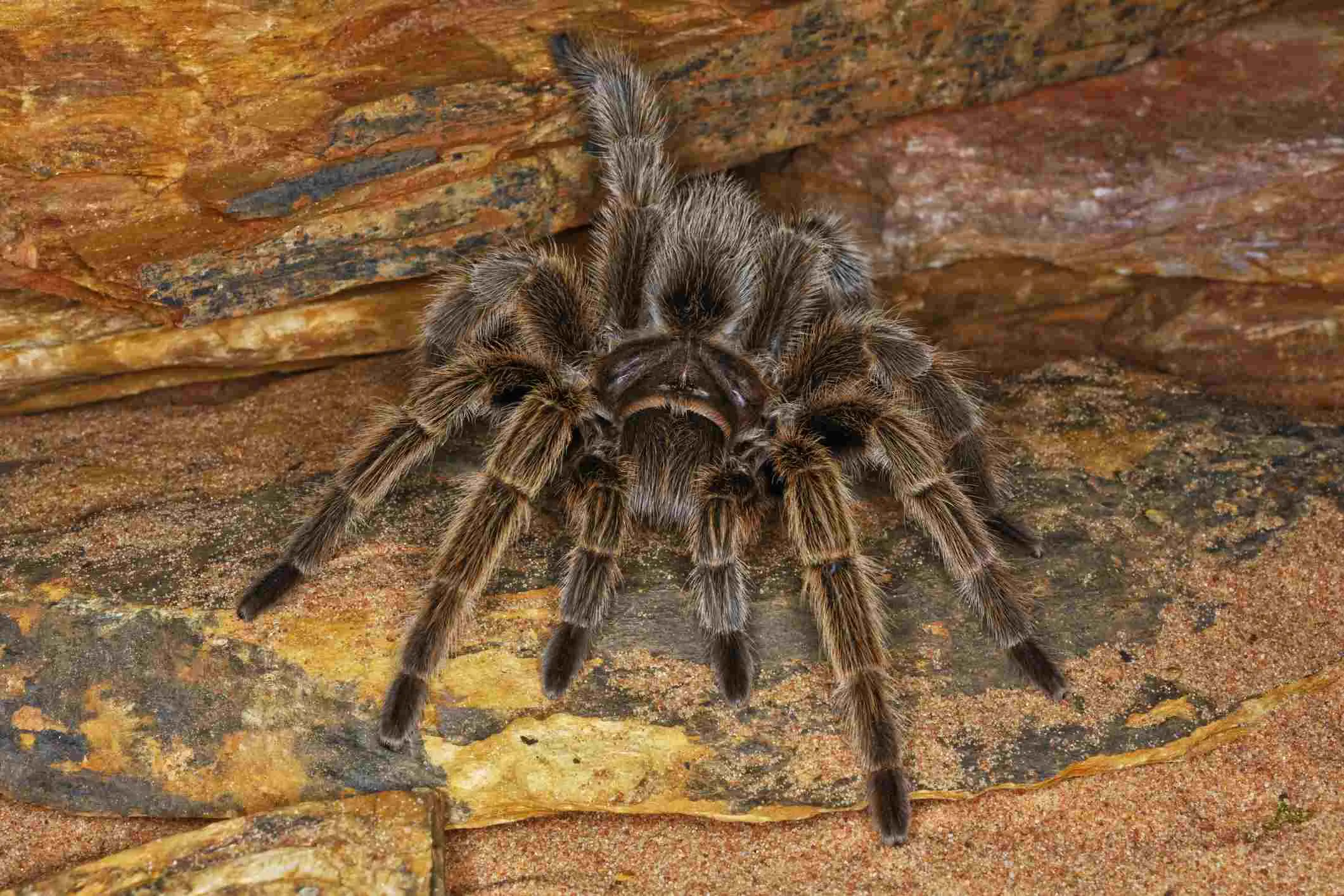
Appearance and Characteristics
The Chilean Rose Hair tarantula (Grammostola rosea) is one of the most popular pet tarantulas due to its docile temperament and relatively low maintenance needs. They typically grow to a body length of around 2.5 inches, with a leg span of up to 5-6 inches. Their coloration is generally a combination of brown, tan, and pinkish hues, with a subtle rose-colored tint on their hairs, which gives them their name. They are a terrestrial species, spending most of their time on the ground.
Care and Habitat
Chilean Rose Hairs are relatively easy to care for. They thrive in a terrestrial setup with a substrate of coconut fiber or peat moss. The enclosure should be large enough for them to move around, with a water dish and a hide, like a piece of cork bark. Maintain a temperature between 70-80°F (21-27°C) and a humidity level of 60-70%. Feed them appropriately sized insects like crickets or mealworms once or twice a week. They are known for their longevity, with females often living up to 20 years.
2. Mexican Red Knee Tarantula
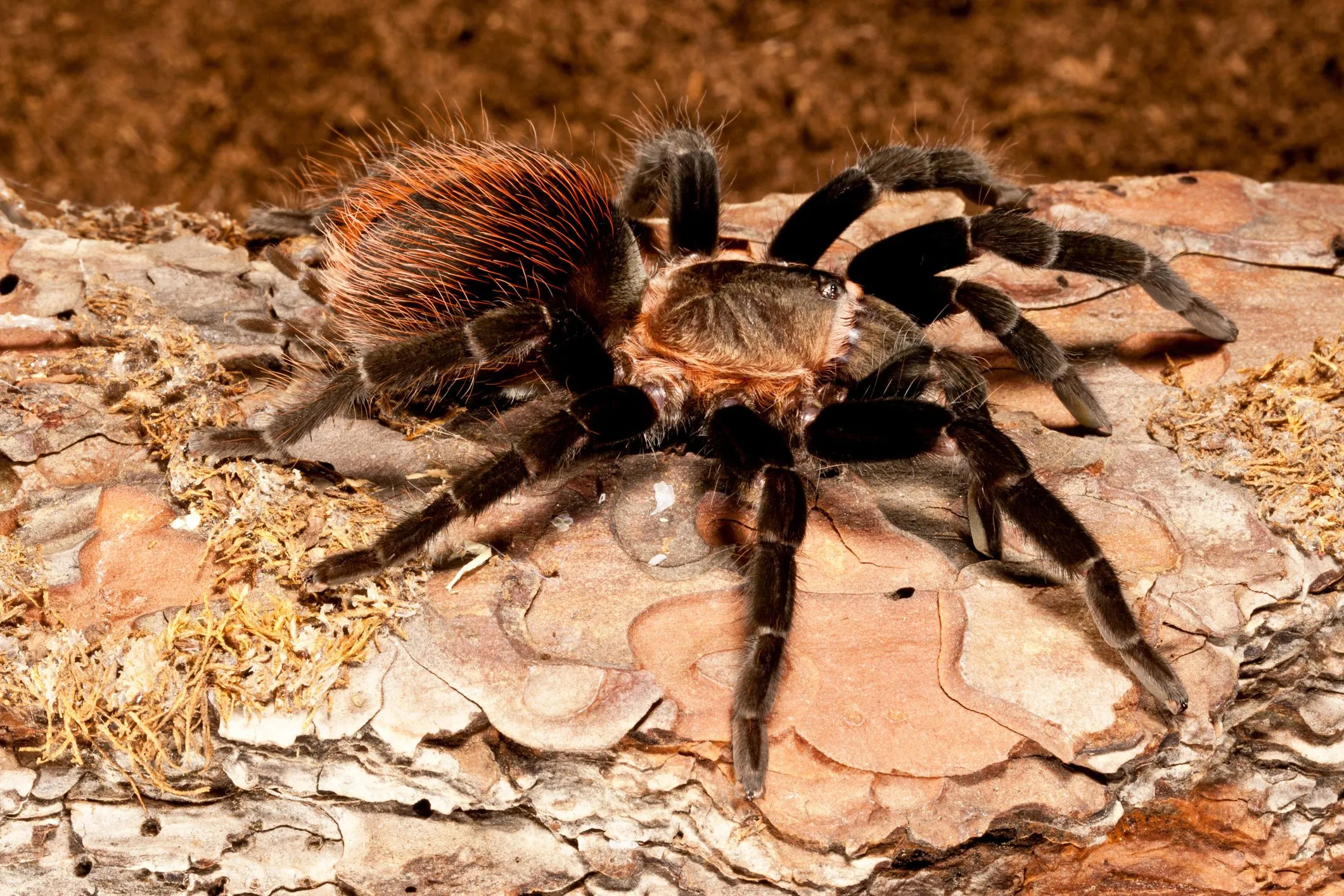
Appearance and Characteristics
The Mexican Red Knee tarantula (Brachypelma hamorii) is a well-known and beloved choice, celebrated for its striking coloration and generally docile temperament. Easily recognizable by the vivid orange-red markings on their leg joints, resembling ‘knees,’ against a black body. They typically grow to a body length of about 2-3 inches, with a leg span of up to 5-6 inches. These are also terrestrial tarantulas, appreciated for their visual appeal.
Care and Habitat
Similar to the Chilean Rose Hair, the Mexican Red Knee thrives in a terrestrial setup with coconut fiber or peat moss. A spacious enclosure with a water dish and a hide is ideal. Temperature should be kept between 75-85°F (24-29°C), and humidity should be 60-70%. Feed them appropriately sized insects once or twice a week. Mexican Red Knees have long lifespans as well, with females living over 20 years. They can be slightly more sensitive than Chilean Rose Hairs, so proper humidity is crucial.
3. Curly Hair Tarantula
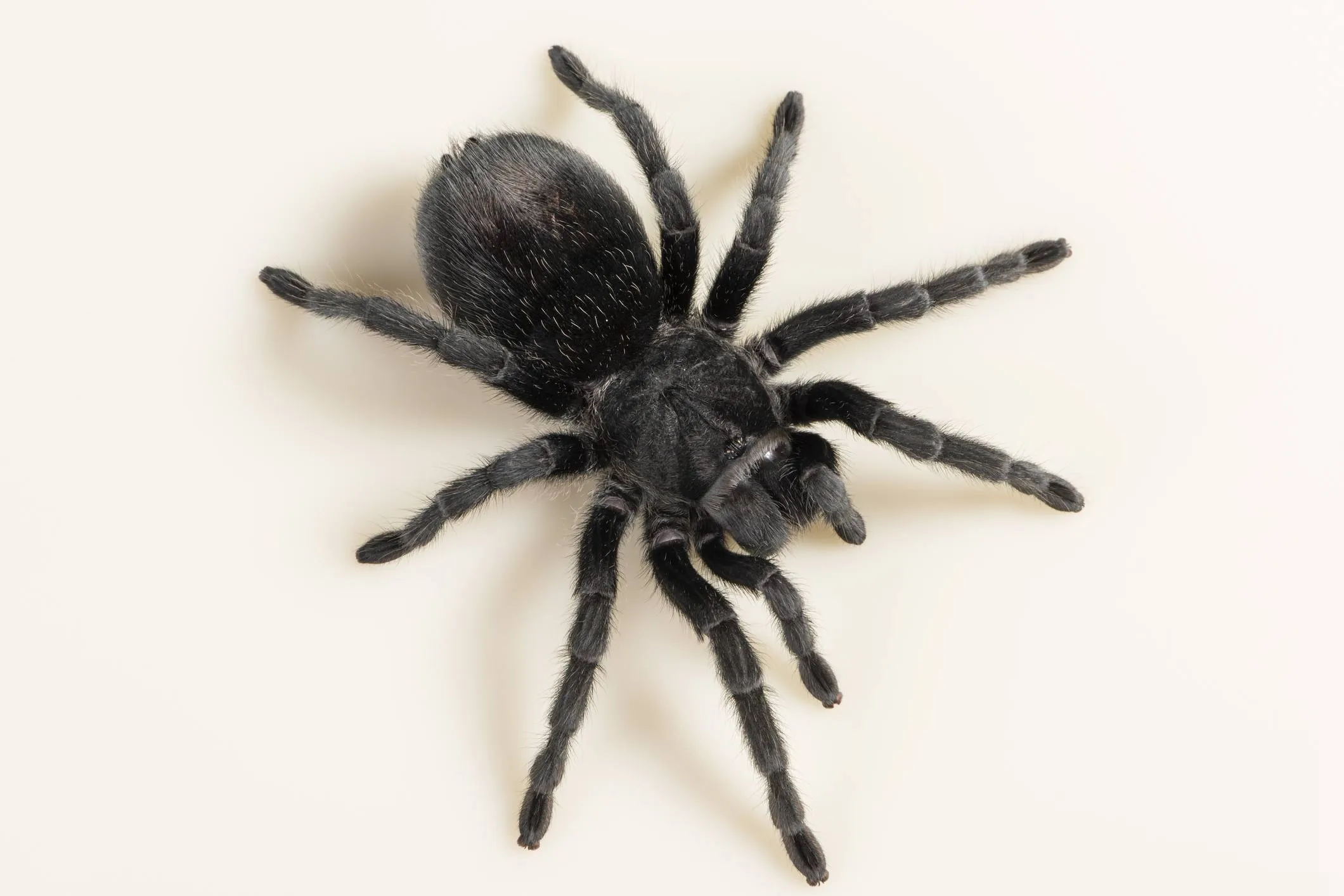
Appearance and Characteristics
The Curly Hair tarantula (Tliltocatl albopilosus) is another excellent choice for beginners. They’re named for the characteristic curly hairs covering their body, giving them a unique and appealing look. They have a combination of dark brown and golden hairs. They are terrestrial and grow at a moderate pace, reaching a body length of around 2-3 inches and a leg span of 4-6 inches.
Care and Habitat
Caring for Curly Hair tarantulas is generally straightforward. They need a terrestrial setup with a substrate of coconut fiber or peat moss. Ensure a water dish and a hide are provided. Keep the temperature between 75-85°F (24-29°C), with a humidity level of 60-70%. They tolerate fluctuating conditions well, making them an excellent beginner option. Feed them appropriately sized insects once or twice a week. They are typically docile and relatively easy to handle, which increases their popularity.
4. Pinktoe Tarantula
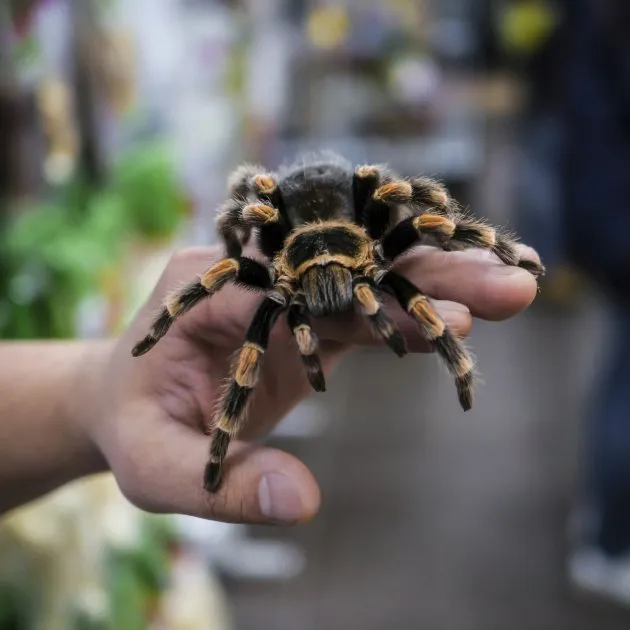
Appearance and Characteristics
The Pinktoe tarantula (Avicularia avicularia) is a beautiful arboreal species. Arboreal means they prefer to live in trees or elevated environments. They are known for their striking appearance with a dark body and pink or red tips on their toes. They typically grow to a body length of about 2-3 inches and a leg span of up to 5-6 inches. They are a fast-growing species and are known for their agility.
Care and Habitat
Pinktoe tarantulas need an arboreal setup, needing a taller enclosure with plenty of vertical space. Provide branches, cork bark, or other climbing materials. Use a substrate like coconut fiber or a mixture of peat moss and vermiculite. Keep the temperature between 75-85°F (24-29°C), with a humidity level of 70-80%. Mist the enclosure regularly to maintain humidity. They are more sensitive to changes in humidity compared to terrestrial species. Feed them appropriately sized insects, usually once or twice a week.
5. Costa Rican Zebra Tarantula
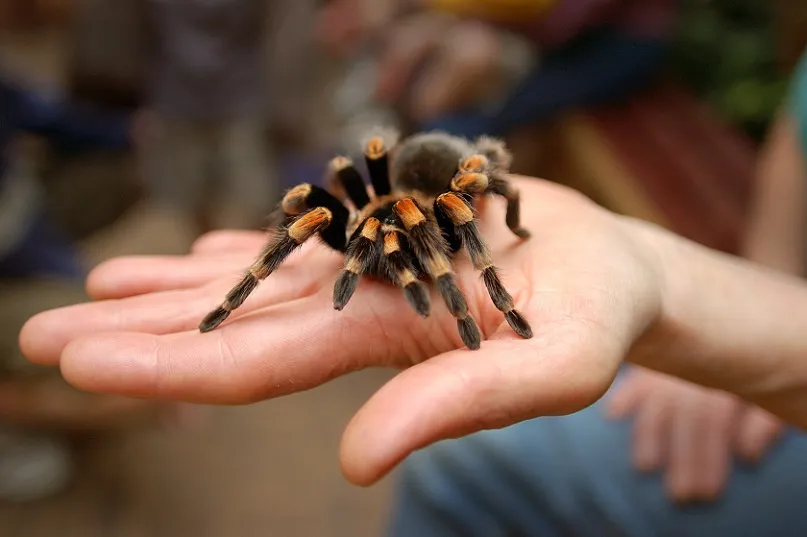
Appearance and Characteristics
The Costa Rican Zebra tarantula (Aphonopelma seemanni) is a striking terrestrial species, named for its black and white striped legs, resembling a zebra. Their bodies are generally brown or tan. They have a relatively calm temperament, making them a good choice for beginners. They typically grow to a body length of around 2-3 inches, with a leg span of up to 5-6 inches. They are also active and often visible in their enclosures.
Care and Habitat
Costa Rican Zebra tarantulas require a terrestrial setup with a substrate of coconut fiber or peat moss. Provide a water dish and a hide. Maintain a temperature between 70-80°F (21-27°C) and a humidity level of 65-75%. Feed them appropriately sized insects once or twice a week. They are known to be hardy and relatively low-maintenance, making them a great choice for beginners. They are also relatively fast-growing, and their unique appearance makes them a favorite among many pet owners.
Conclusion Choosing the Right Tarantula
Choosing the right tarantula involves considering factors such as temperament, ease of care, and your personal preferences. The Chilean Rose Hair, Mexican Red Knee, Curly Hair, Pinktoe, and Costa Rican Zebra tarantulas are excellent options for pet owners. Remember to research the specific needs of any species before acquiring it. Always prioritize the well-being of your pet. With the right knowledge and care, tarantulas can become fascinating and rewarding pets. Enjoy the experience of caring for these amazing creatures, and always focus on responsible pet ownership.
